NORTH WALES COAST RAILWAY:NOTICE BOARD
Rheilffordd arfordir gogledd Cymru: Hysbysfwrdd
23 November 2020





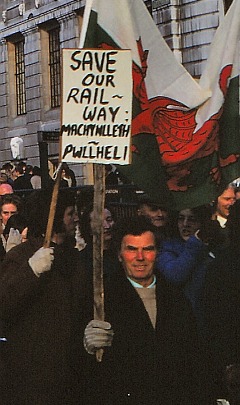
Forthcoming events
(see also our Calendar page for venues)
Note: we have removed all entries relating to meetings as the events are cancelled.
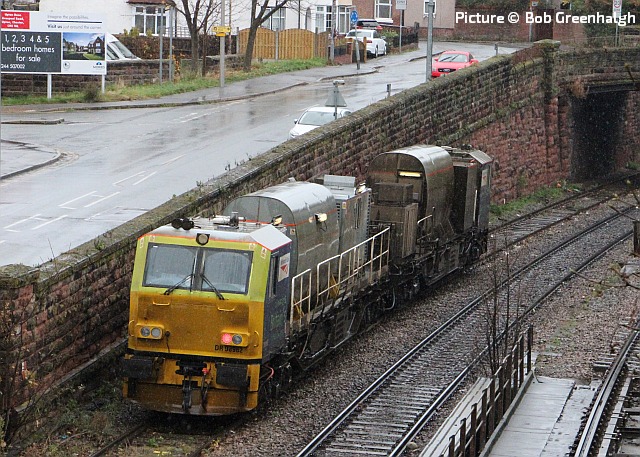
Bob Greenhalgh timed his exercise walk on 20 November to see DR78912 & 79862 on a Chester - Wrexham rail head treatment trip. Perhaps leaves on Gresford Bank were giving problems.
Chester, 23 November 2001 - from Tim Rogers' archive
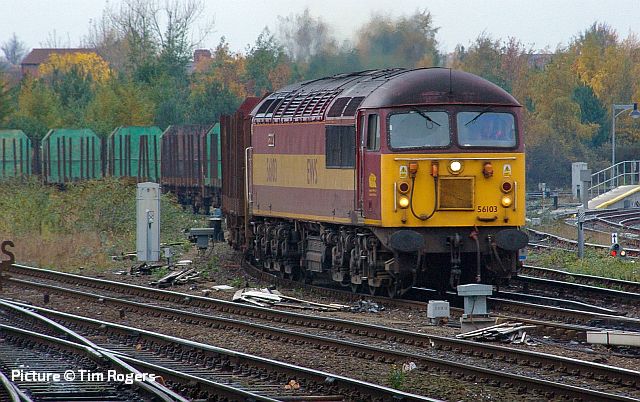
56 103 Stora with 6C63 06:12 Chirk to Carlisle Yard. The empty OTA timber wagons are the four-wheeled vehicles converted from other air-braked types thar were initially used for this flow.
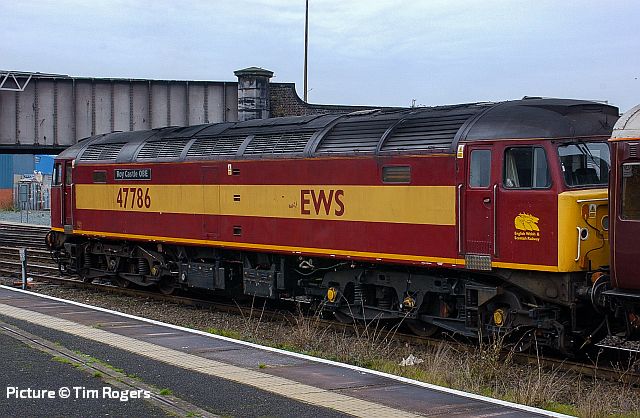
Stabled on the centre road, 47 786 Roy Castle OBE with the 'Northern Belle' train.
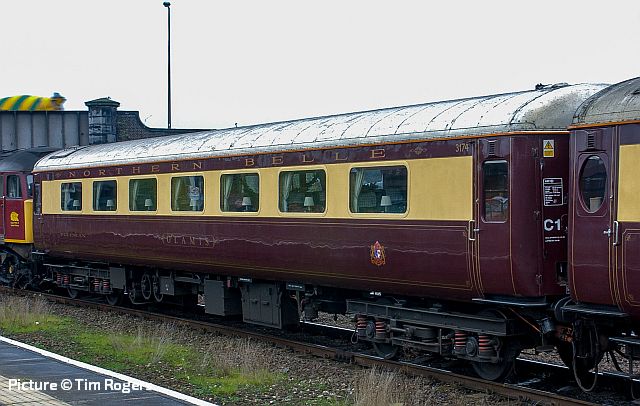
The passenger accommodation was a mixture of Mk 2d and Mk2e air-conditioned first class open saloon (FO) vehicles. Above, Mk2d, FO 3174 Glamis.
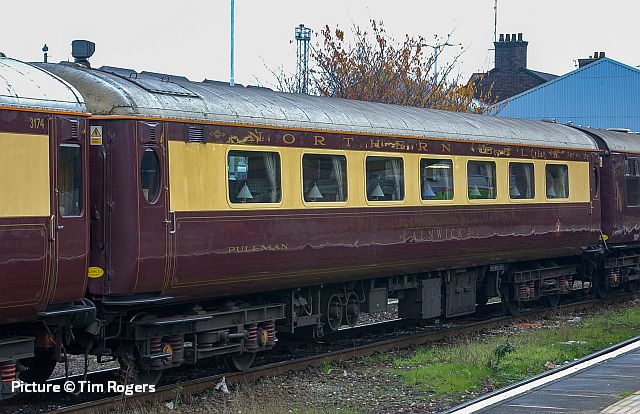
Mk2e FO 3273 Alnwick has been modfied with oval windows in the doors to make it look more like a traditional Pullman. The main difference between 2d and 2e was the size of the toilet compartments.
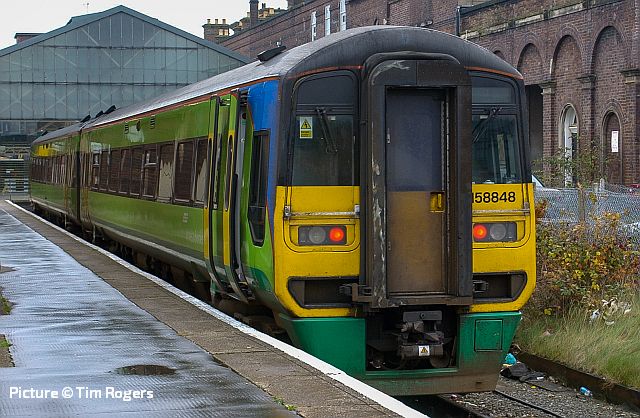
158 848 parked in the west bay wears Central Trains colours ...
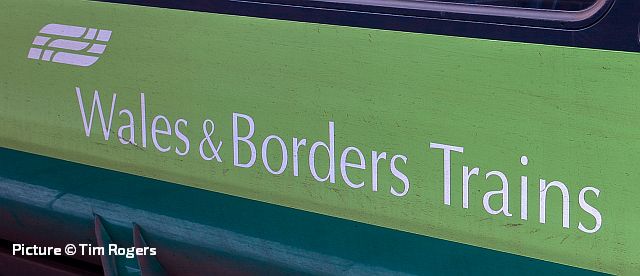
... with 'Wales and Borders' branding, This National Express franchise began in October 2001, and with the addition of North Wales services was handed over to Arriva in 2003.
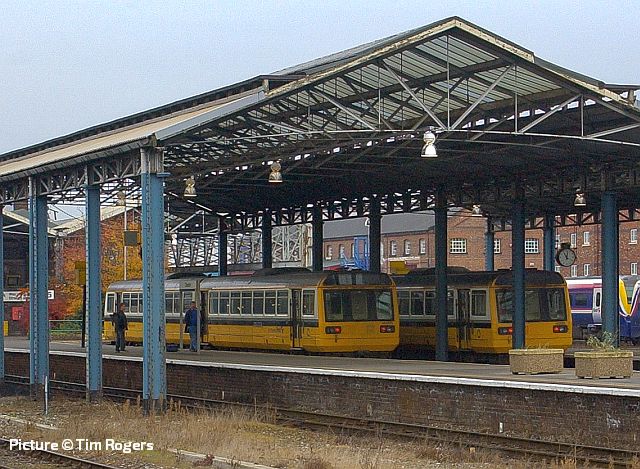
Class 142s in Merseyrail colours occupy platforms 5 and 6. Actually operated by Northern, these yellow units were notorious for their extremely cramped seating.
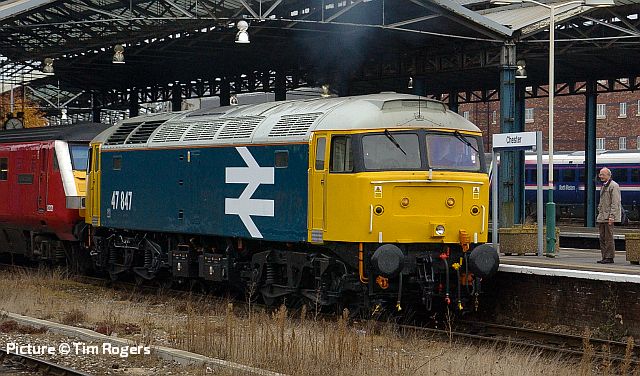
47 847 calls on 1A46 09:19 Holyhead to Euston. Virgin Trains' idea to turn out some its 47s in 'heritage' liveries was a good one, but the numbers were in the wrong font, and the double-arrow didn't seem quite right. This was later remedied, but the result was still wrong, as there should have been a space between the 47 and the 847. Named Railway World Magazine / Brian Morrison in 2002, it went on to haul the very last Arriva Trains Wales loco-hauled North Wales Coast service, on 12 March 2005. It still exists today, owned by Rail Operations Group.
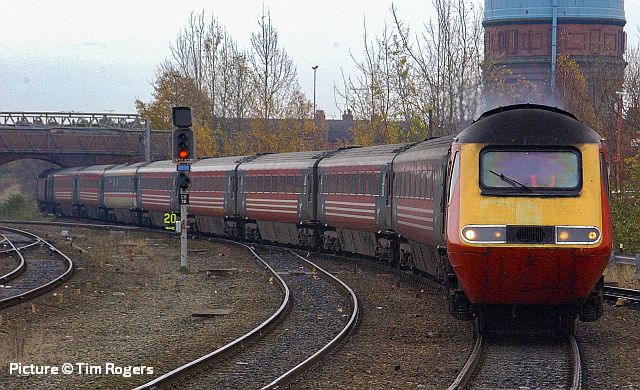
43 194 arrives on the head of 1D87 08:35 London Euston to Holyhead. One coach still carried the British Rail Intercity, four years after Virgin took over. 43 194 is now working for Great Western on one of their four-coach 'Castle' sets, and named Okehampton Castle.
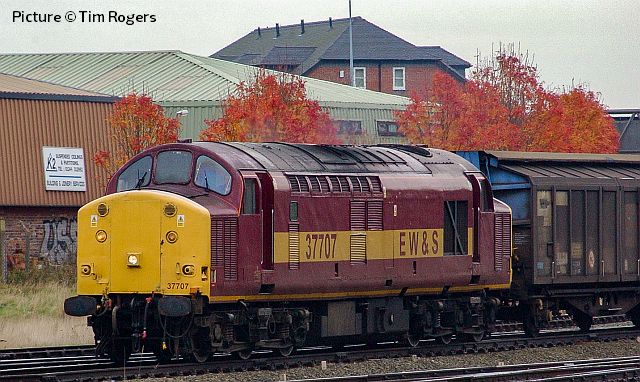
37 707 passes with 6F59 09:15 Arpley to Dee Marsh 'Enterprise' service with vans for Shotton Paper Company. Enterprise was the name given by EWS for its residual wagonload network.
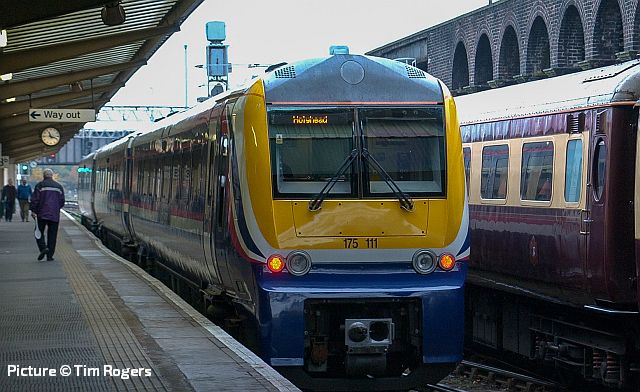
175 111, less than a year old, working the 10:02 Manchester Piccadilly to Holyhead.
Cambrian Coast saved
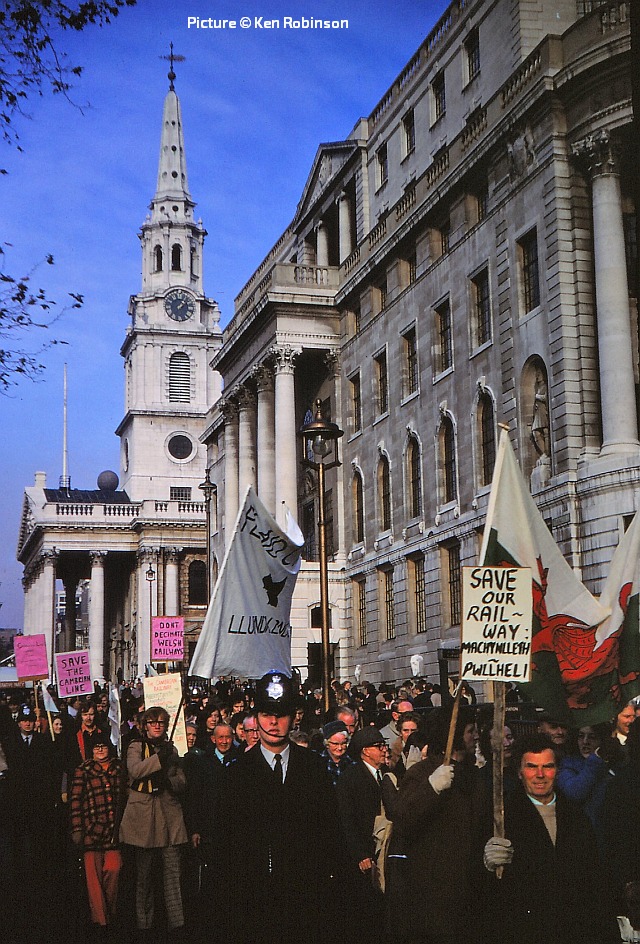
Ken Robinson writes: 'The 'Cambrian Milestone' item by Chris Magner in the last issue was very significant, and I agree whole-heartedly with his comments. I was on the chartered train to London and took a few photographs - here's one - of the march through London on 18 November 1972.'
From Dave Sallery's archive
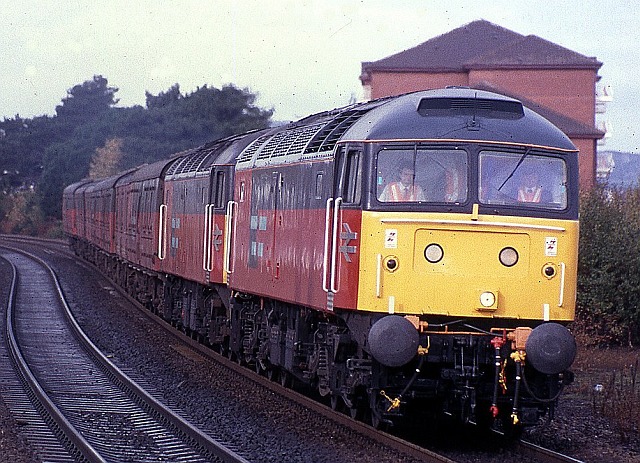
On 21 October 1994 Res loco 47 791 on test from Crewe works. with 47 767 for insurance, heading back to Crewe passing Colwyn Bay.
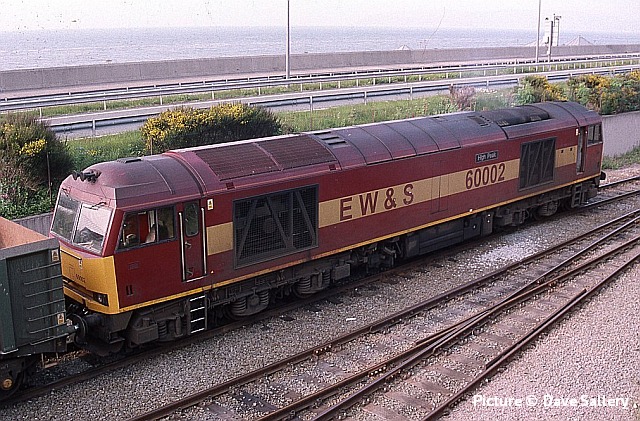
On 10 May 2000 60 002 High Peak on a ballast train to the 'virtual quarry' at Crewe, just after that system was brought in.
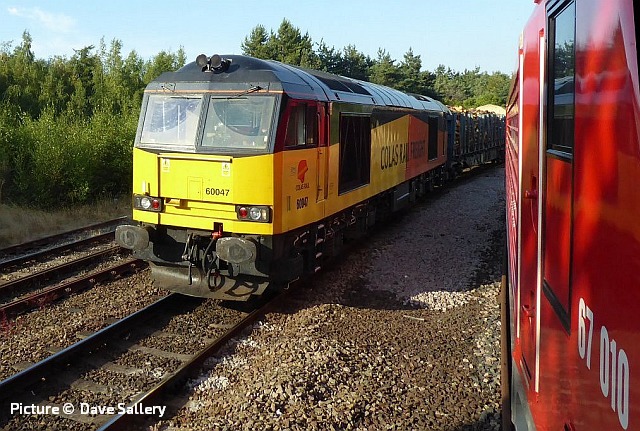
A recent photo showing the pace of change. On 5 July 2018, taken from the rear drop-down window of a Mark 3 carriage with 67 010 pushing on the rear of a Crewe - Holyhead train, loco hauled due to engineering work on the Cardiff route. It is passing 60 047 on the Carlisle - Chirk logs just after leaving Chester. In 2020 we no longer have Mark 3s in North Wales and drop-down windows are a thing of the past. 60 047 has been sold to GB Railfreight while 67 010 is now in Caledonian Sleeper livery.
Bala Lake news
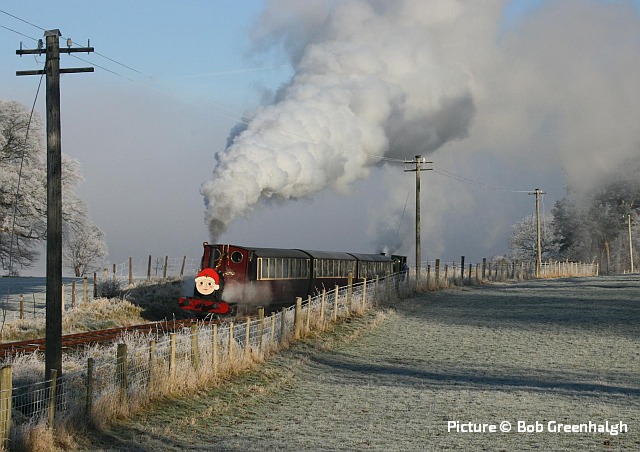
Sadly, the Bala Lake Railway has announced it will not be running Santa Trains this year due to Covid. I've dug out a photo of one from 7 December 2008 . It shows Maid Marian heading the first train of the day back to Llanuwchllyn from Santa's Halt. Driver Ben Barnes is on the regulator; Ben is the Grandson of Bala founder George Barnes. The car said it was minus 3 degrees and there was a heavy frost and low mist making for a super photo.
What the Government wants
Sifting through recent Welsh Government documents we have extracted the following wish list for the North Wales route:
To bring the NWML up to the same standard as the other “main lines” across the UK, requires a major upgrade in terms of line speed, capacity and electrification. This is essential to enable delivery of WG journey time and economic ambitions, and to integrate with the UK Government’s Northern Powerhouse. Key requirements include:
Reduced stop main-line intercity services to reduce journey times;
All stop commuter services between Llandudno and Crewe/Wrexham and Holyhead and Llandudno Junction;
More service from North Wales across to Manchester and Leeds;
New stations at Holywell and Broughton
The Welsh Government has also set out some journey time ambitions:
There's also a 'written statement' which is labelled 'Union Connectivity Review' which might be worth reading if you like guessing the future,Llandudno > Crewe 60 minutes
Holyhead > Chester 60 minutes
Looking back: Irish Narrow Gauge - by David Pool

On my first visit to Ireland I found some abandoned rolling stock of the County Donegal Railways Joint Committee at Strabane, as illustrated in an earlier NWCR Notice Board. One of the two locomotives there on 6 September 1968 was No.5 Drumboe, the other (No.4) had a slightly different chimney. No.5 eventually arrived at the Railway Preservation Society of Ireland’s base at Whitehead, where it has been restored. It is due to move to the Donegal Railway Hertiage Centre, Donegal, in 2021.
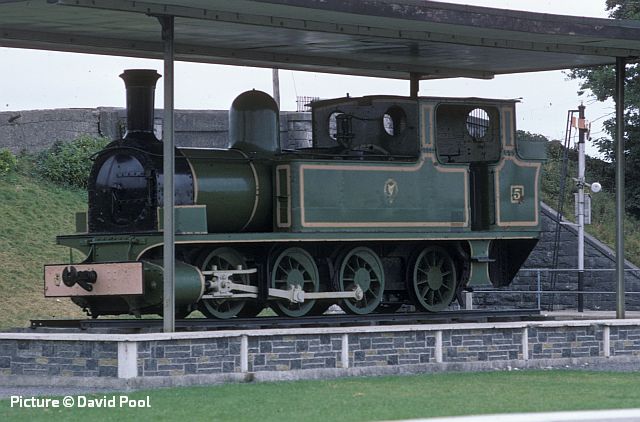
The West Clare Railway was another 3 foot gauge line which eventually closed in 1961. One of their locomotives, No.5 Slieve Callan, was preserved under a canopy at Ennis, where I photographed it on 6 September 1969. No.5 was built by Dübs in 1892, and is unusual in that the trailing wheels are the same size as the driving wheels. A preservation group planned to reopen part of the line, and were offered No.5 if they were prepared to give it a major overhaul and restore it to steam. It returned to Moyasta Junction in 2009, where a WCR Museum is sited.
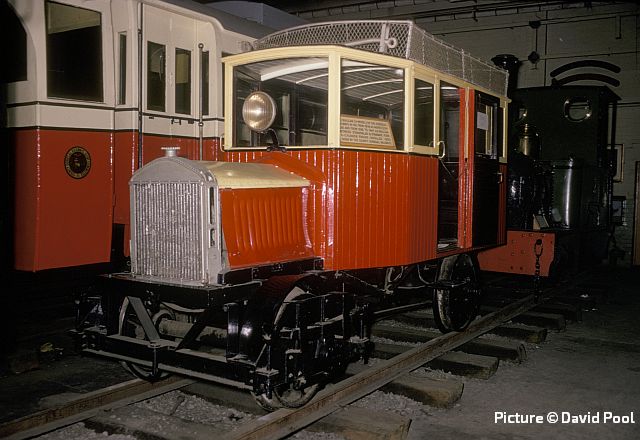
The Railway Museum in Witham Street, Belfast, has now closed, and the Ulster Folk and Transport Museum at Cultra has taken its place. On 29 August 1970 I visited Witham Street, where the original CDRJC Railcar No.1 was preserved. This was the first internal combustion railway vehicle in Ireland, built by Allday and Onions of Birmingham in 1906 as an Inspection Car. The body was fitted in 1920, and it was eventually withdrawn in 1956.
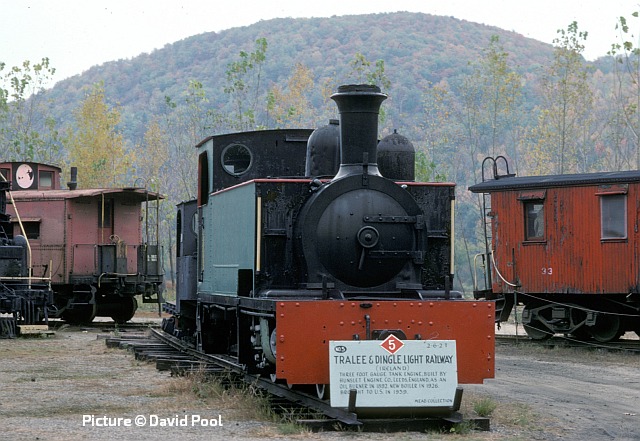
On 16 October 1977 I visited the Railroad Museum at Bellows Falls, Vermont, U.S.A, with the intention of photographing the preserved Union Pacific 'Big Boy' in particular. I had not expected to find a small Irish locomotive displayed with its larger American and Canadian cousins. Tralee and Dingle Railway No.5 was built by Hunslet in 1892, and had been a favourite with the footplate crews, being more powerful than the other locomotives on the line. It was withdrawn in 1948 for a major overhaul at Inchicore Works, then moved to the West Clare Railway in 1949 where it ran until 1959. Having emigrated to Vermont, it was finally brought back to Ireland in 1988 and restored over a period of five years.
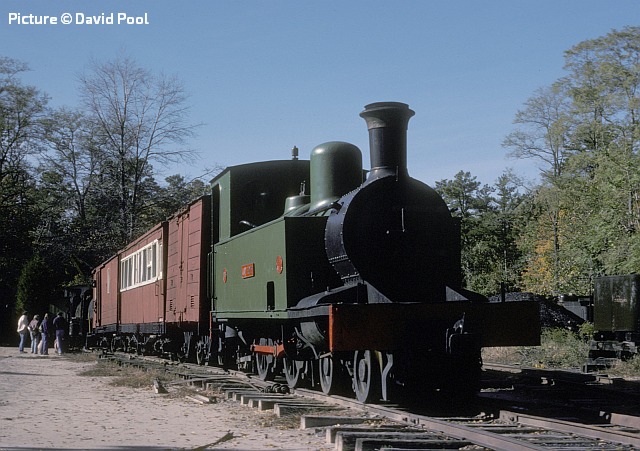
Often the most interesting finds turn up in unexpected places. While I was working in the U.S.A. I learned that there were preserved locomotives at Allaire State Park, New Jersey. A weekend trip was quickly organised for 23 October 1977, enabling me to see Cavan and Leitrim Railway No.3 Lady Edith, and also my first sight of a Shay logging locomotive. I confess I was more intrigued with the latter than with Lady Edith, since I had previously seen C & L No.2, a sister locomotive, at Witham Street. No.3 had been built by Robert Stephenson in 1887, and is still at Allaire, now the location for the New Jersey Museum of Transportation.
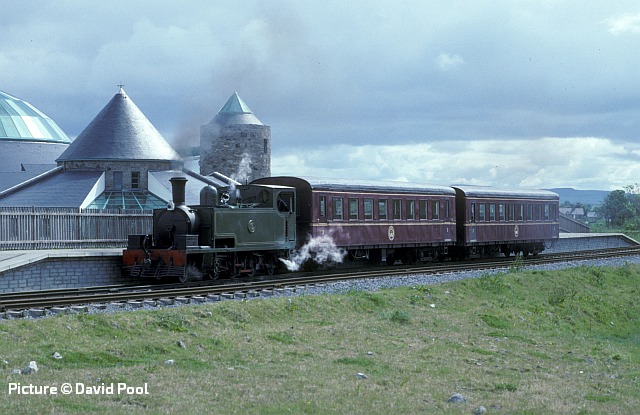
Visiting Ireland in 1995 I had to get to Tralee to see No.5 again. On 17 May I went to Blennerville, the locomotive shed for the newly reopened Tralee and Dingle tourist railway, and returned the following day to see No.5 in steam at Tralee. I was a little disappointed, in that no attempt had been made to recreate the ambience of the Irish Narrow Gauge – just a bare platform adjacent to the Aqua Dome, a modern tourist attraction. Perhaps not surprisingly, the railway has not run since 2006, and although there are plans to reopen, much work will be necessary on the locomotive and rolling stock.
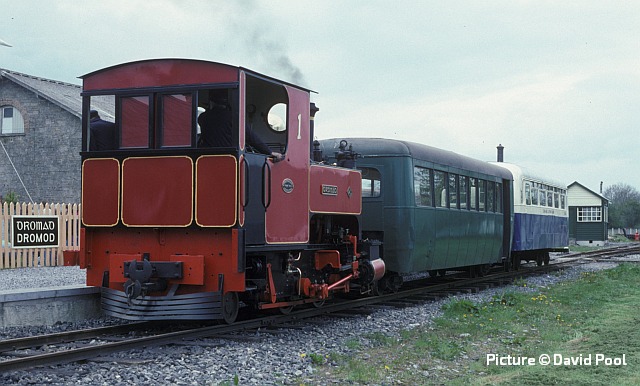
The main line interchange with the Cavan and Leitrim Railway was at Dromod, where an enthusiastic preservation group has established a museum and a short narrow gauge line. I was following a Steam Railtour on 11 May 1996, which called at Dromod, so of course the number of visitors guaranteed that there would be activity on the narrow gauge. A Kerr Stuart locomotive (built in 1916) was in steam, hauling some railcar trailers. It is described as Dromad, the Irish language version of the name.
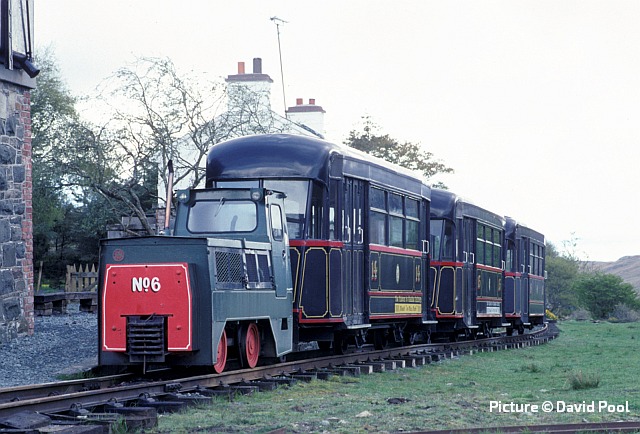
Fintown in County Donegal between Glenties and Letterkenny was on the CDRJC, and is in a scenic part of the country. Many railway enthusiasts would like to see at least part of the CDRJC restored, but previous attempts have not had much success. There is a museum in Donegal, but the short line at Londonderry (the Foyle Valley Railway) is now closed and the museum at Donegal does not yet have an operating line. I you want to see anything moving on a CDRJC line you have to find your way to the Fintown Railway! There had been a scheme to rebuild part of the line at the site of Fintown station, and when Shane’s Castle tourist railway closed in 1995 the opportunity was seized to acquire three coaches. A Motor Rail Simplex type 102T diesel locomotive was obtained, and I photographed the assembly on 19 May 1996.
The coaches were originally tram trailers from Charleroi in Belgium. The Fintown Railway eventually got a genuine CDRJC Railcar, and the coaches were no longer needed. The arrangement is now that the diesel hauls the railcar down the line, as the latter is set up to power in only one direction, and the railcar tows the diesel on the return. Any visitors would be strongly advised to make sure a train was running before visiting the railway, since cancellations appear to be not unusual. Since my visit, the Simplex has been rebodied by Alan Keef, now looking more like the CDJR No.1 railcar, and the Southwold Railway in Suffolk has got one of the tram trailers, which I saw in 2019, and may get a second. All that is needed at Southwold is a track on which to run them and a locomotive to be built … I look forward to developments!
North Wales Coast home page | Archive | Previous Notice Board